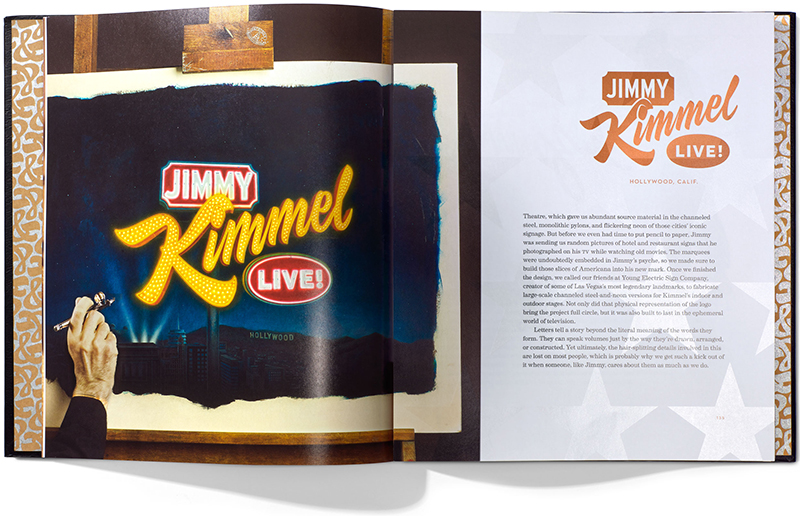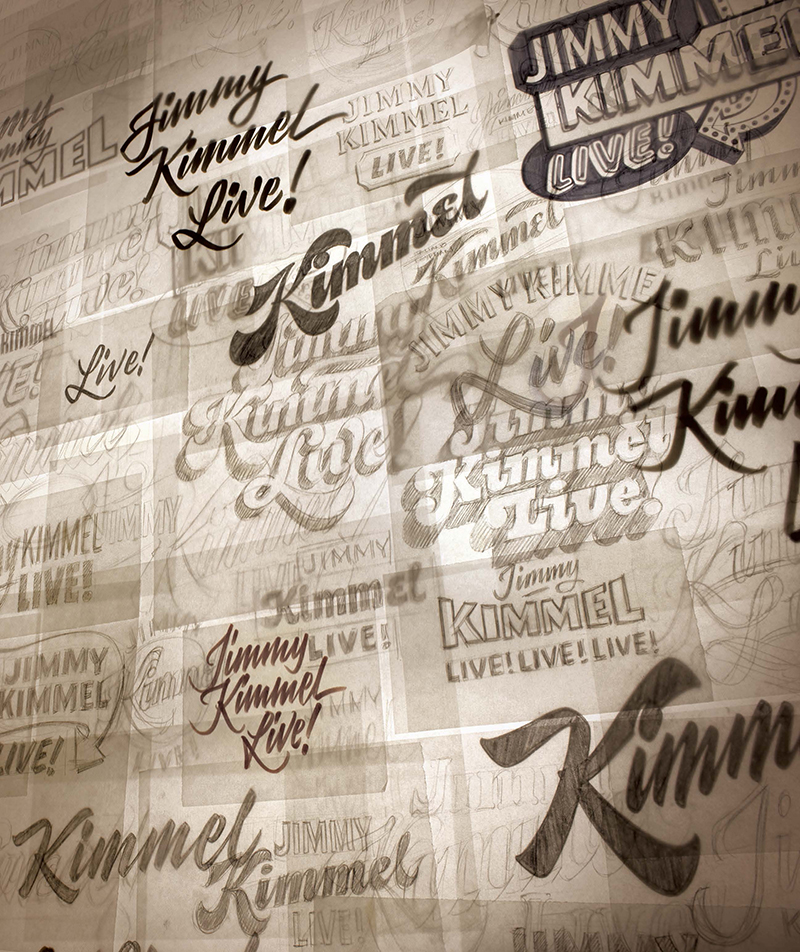
The following is an excerpt from the new House Industries: The Process Is the Inspiration, published with permission of the publisher, Watson-Guptill, an imprint of Penguin Random House LLC. Copyright © 2017 by House Industries. Photographs copyright © 2017 by Carlos Alejandro. And if you happen to be in Detroit, stop by and see the House Industries: A Type of Learning exhibition at the Henry Ford Museum of Innovation through September 4, 2017. —The Editors
Sweating the technique is a two-way street, and can be a shared ideal to bring together people from different backgrounds. That’s how House Industries found a kindred spirit in the unlikely form of a late-night talk show host.
House Industries owner and art director Andy Cruz had just gotten home when his daughter told him, “The guy from Jimmy Kimmel Live called.” Andy was going to blow it off as a prank by one of the smart-asses at the studio, but he listened to the message anyway: “Hi. This is Jimmy Kimmel. Sorry for bothering you at home. I just wanted to talk to you about designing a logo for my show.” The voice sounded legit, so Andy returned the call. It turned out that Jimmy is a type nerd who once aspired to be a graphic designer before settling on a more honorable career in radio and television.
After sharing stories about finding the original artwork for Aladdin Industries’ 1976 Welcome Back, Kotter lunch box and inquiring about the correct pronunciation of “Eames,” Jimmy invited us out to Hollywood to sit in on a show rehearsal. It looked like Jimmy was having a lot of fun when we watched him on TV, but getting a peek behind the curtain and seeing him pull together a show that was funny and entertaining in just a few hours gave us a new appreciation for his craft. That’s when we knew that Jimmy got it. He understood that technique has a lot of moving parts, and he had a deep appreciation for every step of the process. At that point, our only question was what kind of logo would best tell Jimmy’s story.

Jimmy was born in Brooklyn, spent the second half of his childhood in Las Vegas, and performs his show in Hollywood’s El Capitan Theatre, which gave us abundant source material in the channeled steel, monolithic pylons, and flickering neon of those cities’ iconic signage. But before we even had time to put pencil to paper, Jimmy was sending us random pictures of hotel and restaurant signs that he photographed on his TV while watching old movies. The marquees were undoubtedly embedded in Jimmy’s psyche, so we made sure to build those slices of Americana into his new mark. Once we finished the design, we called our friends at Young Electric Sign Company, creator of some of Las Vegas’s most legendary landmarks, to fabricate large-scale channeled steel-and-neon versions for Kimmel’s indoor and outdoor stages. Not only did that physical representation of the logo bring the project full circle, but it was also built to last in the ephemeral world of television.
Letters tell a story beyond the literal meaning of the words they form. They can speak volumes just by the way they’re drawn, arranged, or constructed. Yet ultimately, the hair-splitting details involved in this are lost on most people, which is probably why we get such a kick out of it when someone, like Jimmy, cares about them as much as we do.
